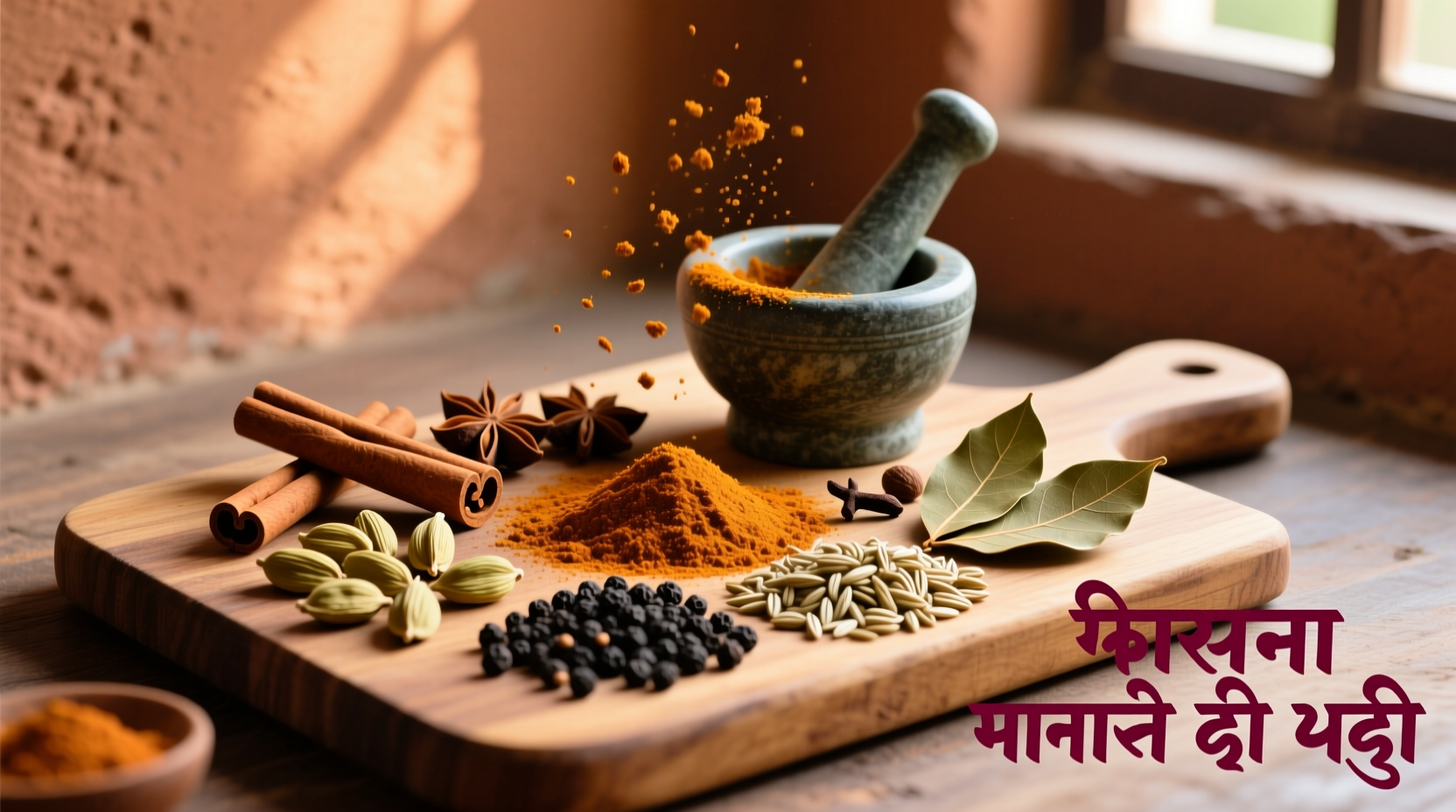Why Homemade Masala Beats Store-Bought Every Time
Commercial masala powders lose up to 73% of their essential oils within weeks of grinding, according to research from the National Center for Biotechnology Information. When you make your own, you control freshness, quality, and customization. The moment you toast whole spices, you activate aromatic compounds that create that unmistakable warm, complex masala character.
The Essential Masala Toolkit
You don't need specialty equipment, but these tools make a difference:
- Cast iron skillet - Provides even heating for perfect toasting
- Spice grinder (dedicated coffee grinder works) - Ensures fine, consistent powder
- Airtight glass container - Preserves volatile oils better than plastic
- Small bowls - For separating toasted spices
Core Spices and Their Flavor Contributions
| Spice | Flavor Profile | Key Compound | Percentage in Blend |
|---|---|---|---|
| Coriander seeds | Citrusy, nutty, slightly sweet | Linalool | 30% |
| Cumin seeds | Earthy, warm, slightly smoky | Cuminaldehyde | 25% |
| Cardamom pods | Floral, citrus, eucalyptus notes | 1,8-cineole | 15% |
| Black peppercorns | Sharp heat, pine notes | Piperine | 10% |
| Cloves | Intense warmth, sweet-bitter | Eugenol | 8% |
| Cinnamon stick | Woody sweetness, subtle heat | Cinnamaldehyde | 7% |
| Nutmeg | Warm, nutty, slightly sweet | Myristicin | 5% |
Step-by-Step Masala Creation Process
The critical mistake most home cooks make? Toasting all spices together. Different spices release their volatile oils at different temperatures. Follow this professional sequence:
- Start with heavier spices - Toast cinnamon and cloves first (3-4 minutes)
- Medium-weight spices next - Add cumin and coriander (2-3 minutes)
- Delicate spices last - Finish with cardamom and peppercorns (60-90 seconds)
- Cool completely - Essential step! Grinding warm spices creates steam that degrades quality
- Grind in small batches - Prevents overheating the spice grinder motor

Proportion Framework, Not Rigid Recipe
Traditional Indian cooks adjust masala ratios based on season, dish, and regional preferences. This flexible framework works better than fixed measurements:
- For rich meat dishes: Increase cumin by 5% and black pepper by 3%
- For delicate vegetable curries: Boost cardamom by 4% and reduce cloves by 2%
- Summer variation: Add 2% dried mango powder (amchur) for brightness
- Winter variation: Increase cinnamon by 3% for deeper warmth
Storage Science: Preserving Maximum Flavor
Research from the Journal of Food Composition and Analysis shows that ground spices lose 40% of their volatile compounds within 30 days at room temperature. Follow these storage protocols:
- Store in amber glass jars (blocks 90% of light)
- Keep in a cool, dark cupboard (not near the stove!)
- Use within 8 weeks for peak flavor (vs. 3 months for whole spices)
- Never refrigerate - moisture degrades quality
Troubleshooting Common Masala Problems
Even experienced cooks encounter these issues. Here's how to fix them:
- Bitter masala: Over-toasting is the culprit. Next time reduce heat and stir constantly. Fix current batch by blending with 1 tsp powdered sugar.
- Weak flavor: Spices were stale or ground while still warm. Always use fresh whole spices and cool completely before grinding.
- Clumping: Moisture contamination. Sift through a fine mesh strainer and add 1 tsp rice grains to the container to absorb humidity.
Creative Applications Beyond Curry
Expand your masala usage with these professional chef techniques:
- Whisk 1 tsp into vinaigrette for roasted vegetable salads
- Blend with Greek yogurt for a quick marinade (use within 2 hours)
- Sprinkle over popcorn with melted ghee for instant snack magic
- Add 1/2 tsp to chocolate desserts for complex warmth
- Mix with honey for an unexpected glaze on roasted carrots
Regional Variations Worth Trying
India's diverse regions have distinct masala profiles. This timeline shows how trade routes shaped regional variations:
- 1500 BCE: Early Vedic period - Basic blends of black pepper, ginger, and long pepper
- 200 BCE: Spice trade with Rome - Introduction of cinnamon and cassia
- 1500 CE: Mughal influence - Cardamom and nutmeg become prominent
- Present day: Regional specialization - North (warmer, heavier spices), South (more chili, curry leaves)
Try these authentic regional versions:
- Delhi-style: Add 1 star anise and 3 black cardamom pods for smoky depth
- Hyderabadi: Include 1/2 tsp dried rose petals for floral complexity
- Goan: Blend in 1 dried Kashmiri chili for subtle heat without burning
When to Avoid Homemade Masala
While homemade is generally superior, certain situations call for store-bought:
- Tight time constraints (less than 15 minutes before cooking)
- When making large-batch commercial products requiring consistent flavor
- For individuals with smell/taste disorders who can't judge toasting progress
- When traveling without proper equipment











 浙公网安备
33010002000092号
浙公网安备
33010002000092号 浙B2-20120091-4
浙B2-20120091-4